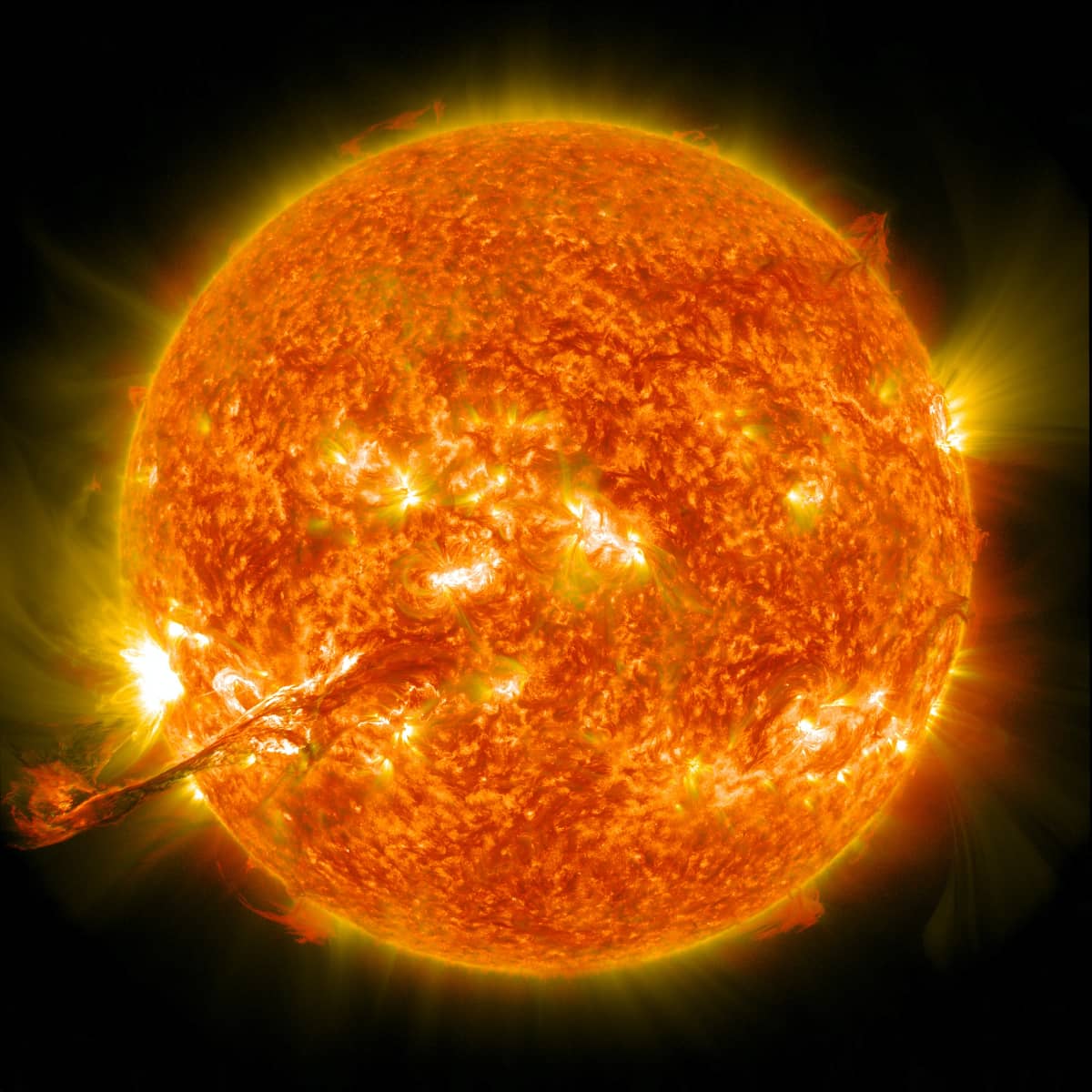How to calculate the sun's remaining lifetime
The sun at the end of its life will inflate, and only its core will be left. The earth will disintegrate and they will mix in a cloud. This will occur in four and a half billion years.

At the end of its life, the sun will inflate, and only its nucleus will remain. The earth will disintegrate, and all the matter of the planets that make up the solar system will mix in a cloud, and probably collide with other clouds of gas and dust, and give rise to new planetary systems. This will occur in four and a half billion years.
Before the sun there were millions of stellar generations, stars that generated new chemical substances, that died, threw their material into space, and were enriched with new substances, and it is thought that the remnant of the sun will give rise to another planetary system, which may be different from ours.
Other worlds have been discovered outside the solar system of lava, or molten rock, others have water and atmosphere, and they want to study these planets to see if they have life; in addition, there are other incredible worlds rich in carbon, and others that must be full of diamonds.
One way to know the age of the stars is to know how much fuel they have, and how much hydrogen and helium there are in the nucleus, which through thermonuclear reactions nourish the sun with light.
To know how many years the sun will last, scientists take as a basis what happens with other stars, how many are being born, when they die, and how many are adult stars, which results in 10 billion years, and the sun is almost halfway through its life. To know this last data, meteorites are taken as a basis.
All the surface rocks of the earth are very young because there is volcanism, which covers them with lava. Some rocks are five hundred years old, and that cannot be the age of the earth, since there are fossil remains of millions of years.
So it is that the meteorites that arrive from space and that were formed together with the solar system have radioactive substances that decay, that is to say, they have uranium that transforms into the lead, the more lead, the older they are, and the more uranium the younger, and based on this we can know the age of the solar system.
And what is going to happen to our galaxy?
We live in a stellar conglomerate of one hundred billion stars. One out of every hundred stars is like the sun, and they go around the center of the galaxy. It takes 250 million years for the sun to go around, and what will happen is that our galaxy will merge with the Andromeda galaxy.
This is known because it has been observed how other galaxies merge, and how large galaxies are made from the merger of smaller galaxies, so it is known that Andromeda and the Milky Way will merge, and will end up being a more ellipsoidal conglomerate of stars. The gas will create outbreaks of star formation, it will end, and there will be aging stars.
Also, you can measure how fast the two galaxies are approaching each other, and he added that our galaxy has a hundred billion stars, and there are a hundred billion galaxies. On a large scale, if we could see the universe, it would look like a three-dimensional spider web, and since we live in an expanding universe, different parts of the cosmic web are expanding, and the gaps are increasing in size.
The universe is space, time, matter, and energy, and it is evolving. It came from the void, from nothingness. From nothingness, energy was released, and that energy was transformed into common matter, which are atoms, protons, and electrons. Another matter is not seen, it is dark, it is known to be there because it gravitationally attracts visible objects. As the universe expanded, it cooled down, and chemical elements, galaxies, and the solar system were formed.




